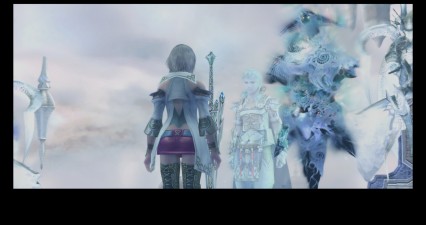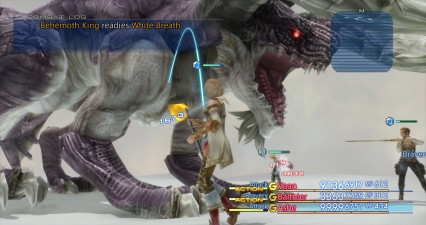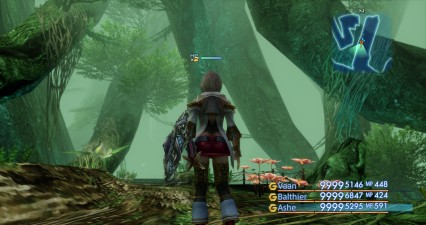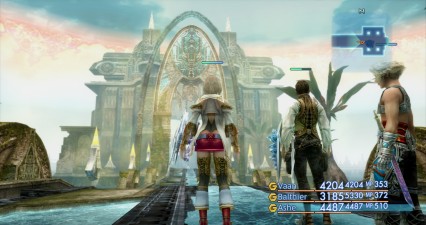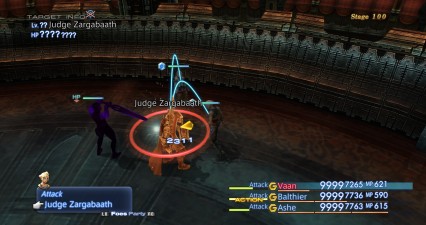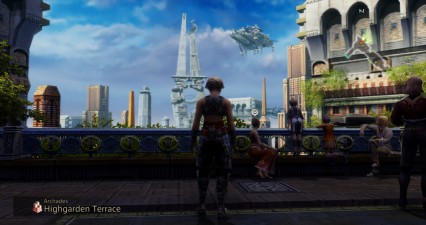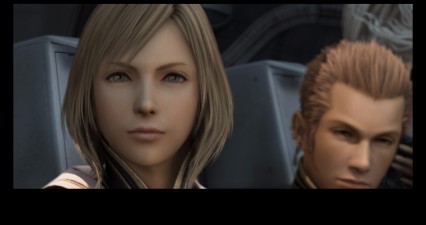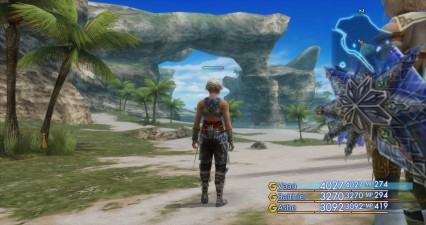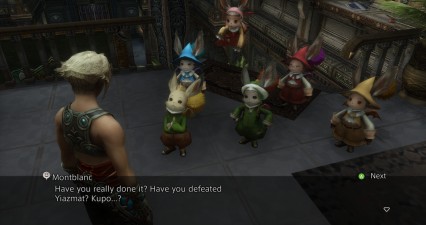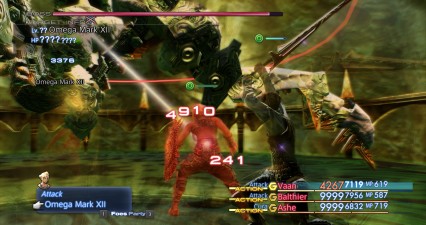27th of August 2023
Final Fantasy XII: The Zodiac Age
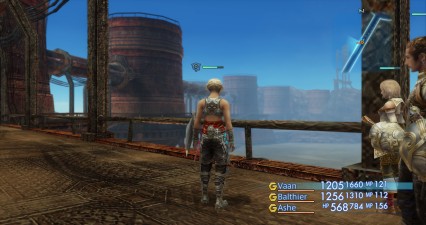
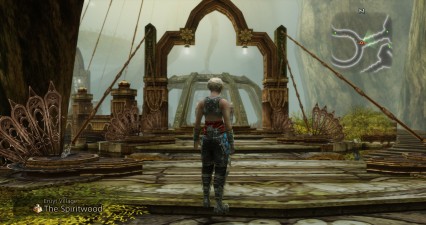
The older you get the less frequently you get to replay games. Those whose objectivity is clouded by nostalgia might put this down to a decrease in quality over the years, but more likely it is because the amount of games in your library can only grow, so it's not like when you were a kid and had only a few games to choose from. Final Fantasy games easily become victims of this, as it's hard to justify sinking 50-100 hours into replaying one when you've got plenty of new games waiting to be played. I played Final Fantasy XII on the PS2 back in 2007 and instantly considered it one of the best games I had ever played, but it still took me 15 years to get around to actually replaying it.
The wisdom back in the day was that Final Fantasy XII is a great game but out of place as a Final Fantasy instalment. However, its place makes more sense in
retrospect, as XII exists in the transition period between the manual-input, turn-based combat mechanics of the past
and the more automated, action-oriented combat mechanics of the future. The turn-based combat coupled with irritating random encounters of the Nintendo and PSX eras was already running
out of steam by Final Fantasy VIII, then reaching the bottom with IX (which, while otherwise one
of the best games of all time, had a boring, uninspired combat system devoid of challenge), so it was time to experiment a
bit beyond the old comfort zone.
First of all, Final Fantasy XII gets rid of the random encounters: Your enemies are visible in the world and you can choose
whether to engage them or not. Second, while the characters still have to wait for their turn-meter to fill up, you can now automate
the characters' combat behavior. This is done via Gambits. These are a set of if conditions ordered by priority. So you'd have if Ally: KO --> Phoenix Down over if Foe:
nearest --> Attack if you wanted a character to interrupt attacking the enemy and instead revive a dead ally mid-battle. When set up properly, the battles will
play themselves with no input from the player (while you can still step in any time to issue orders manually). This actually
makes for a more enjoyable and satisfying experience than continuously pressing "X" in ultimately meaningless battles of
the manual, turn-based era, as there's a learning process (involving some trial and error) for setting up Gambits properly and satisfaction in seeing
them play out the way you wanted.
Of course, early on in the game the system is far from impressive, as you first need to actually acquire the Gambits from
various stores, not to mention the spells and abilities to be automated. But this is a rather common feature of Final
Fantasy games: The versatility of the Materia system in FFVII becomes apparent only after you've acquired
tons of gear and materia. But to actually use more gear, abilities and spells in XII, you first need to obtain their license via a license board with
license points you get from battles. I always felt the system is a bit useless, as you often unlock licenses long before you
get the stuff the license is for.
The board also includes passive abilities like permanent HP upgrades (kinda like the Sphere Grid in FFX).
Unfortunately XII still isn't challenging when it comes to playing through the story. To alleviate this, regular bosses often resort to cheap tricks. For example, when a boss's health hits a threshold, it gains various buffs that suddenly make the battle harder. It seems like they couldn't properly balance the bosses and resorted to simply buffing them when they're about to die. Also, like with previous Final Fantasy games, experience points accummulate only to active party members, which makes you more and more reluctant to switch party members until the story forces your hand. (Luckily they got rid of this system in FFXIII.) Quickenings, the game's iteration of "limit breaks", are kinda fun, involving luck, quick reaction time and some "tactics" (always pick refills first and lower-level attacks over higher-level attacks), but they become basically useless as the game progresses. (Oh, and the game has plenty of traps that are invisible unless the player character is using Libra. These traps are really super annoying, as they can severely drain your HP & MP and debuff you. Better have that float ability ready for certain places...)
The story in Final Fantasy XII is more "pedestrian" than "epic", revolving around dynasties, wars and court intrigues that could be pulled from real life. Yes, there are some typical Final Fantasy elements (a "nethicite" crystal that can be used as a nuclear weapon), but otherwise the game felt more grounded than others in the franchise. Of course, none of this necessarily makes the story bad, but it is rather forgettable, oftentimes even confusing (who's from which kingdom and related to whom, etc.). Luckily the characters are good, particularly the self-proclaimed "leading man", Balthier, with one of the best VA performances in video-game history delivered by Gideon Emery. Princess Ashe, the heir to the throne of a dead king, is a proto-Lightning, serious and focused, and this is largely her story, but I suppose the world in 2007 wasn't ready yet for a female lead. In fact, her knight, Basch, was also considered unfit to lead a Final Fantasy game, because apparently he was considered too masculine and Aryan for a Japanese audience. To placate the effeminate Japanese they went for Vaan and Penelope, two teenagers, instead. These are not terrible characters by any means, just a bit too generic and bystanderish. (In fact, their "leading couple" status is more of a marketing thing, and you can safely just switch your party leader to whomever you want.)
The design of the game's world, Ivalice, is plain gorgeous. The setting is a curious mix of what appears to be high technology
and medieval swords, castles and knights. There are flying vehicles and airships, and the imperial city of Archades is littered
with skyscrapers, but does it qualify as hi-tech and sci-fi if it's powered by magic? Or, what difference does it make whether you
use charged particles or magic if the end result is the same?
As for engine technology, if Final Fantasy X had the unfortunate role of existing during the
transition from static pre-rendered backgrounds to three-dimensional rendered geometry (for a moment there, more was lost than gained, perhaps?), then XII was pushing the
limits of what you could do with PS2 technology. While the Zanarkand Dome in FFX still had to be a pre-rendered image, XII
had similar structures made of actual geometry. The game is also good with jungles and forests full of gigantic trees from fairy tales (the Salikawood
being my favorite, especially combined with its soothing music), and ethereal locations such as Giruvegan and the Feywood. Then you have huge
cities with busy markets where you can almost smell the stench of various spices and cuisines, and beautiful open plains with changing weather. Music
is more low-key than in other Final Fantasy games, but it's among my favorites in the franchise, with each tune perfectly capturing the feel of a given location.
There's plenty of side content too, but most of your time will be spent on hunting "marks", i.e., optional monsters. Many of these are
much harder than any regular boss in the game. At the top of the food chain lie the superbosses Yiazmat and Omega MK XII. Yiazmat is legendary due to
its massive 50 million hit points. While the battle is not terribly difficult, it took me 2-3 hours back in the day (less now
due to the remaster's speed-up function) on a hot summer day. Omega MK XII used to be the ultimate challenge, which is interesting considering
the machine has only one attack. Furthermore, reaching Omega is a quest in itself, as navigating the Great Crystal is notoriously
confusing. Of course, you can follow any of the maps available on the Internet, but I actually had more fun making a map of my own
as I navigated the maze. In addition, while you'll acquire some Espers (think of Summons in FFVII) by playing the story, the best ones lie
at the very end of some notoriously difficult dungeons and you have beat them to acquire them. (Of these Zodiark is by far the most
difficult, as one of his attacks has a non-negligible chance of wiping out the entire party and he often becomes totally immune
to damage.)
The Zodiac Age adds a Trial Mode consisting of 100 battles against various monsters. You load your main game characters
as they are for the Trial Mode, then keep going as far as you can, then take your rewards back to the main game. You can save and
resume Trial Mode the next day, but you'll lose your Trial Mode progress (but not rewards) if you resume the main game instead. 90% of the Trial Mode isn't
challenging at all if you've already beaten the main game, but the last few trials are quite challenging (especially since you don't get
to do any healing & preparations between battles). The final Trial is against a group of Judges. This battle is extremely hard; in fact, I found it
downright impossible without resorting to using the various "break" abilities (Addle, Wither, Expose, Shear) that lower enemy stats. (I've never been able to use
these without feeling a bit dirty; in the original they didn't even work against the hardest enemies.) Also, while the rewards are
rather inconsequential if you've already beaten the game, they can be quite overpowered if you step into the Trial Mode early on in the game, as you
can get your hands on items that otherwise would appear only much later.
A few words about the various editions of the game. The game was re-released in Japan as International Zodiac Job System edition in late 2007. The edition added a job system (think of the Nintendo era Final Fantasy games), the Trial Mode and
a bunch of other new features. The Zodiac Age that's currently being reviewed (its PC version more specifically) is a 2017 remaster of the Job System edition. The Zodiac Age is
considered one of the best remasters of all time. It includes three soundtrack (PS2 emulated, OST version & PS4 Orchestral; regrettably the orchestral does Ozmone Plain,
the best track in the game, a disservice), upgraded textures, support for higher resolutions (including 4K) and plenty of quality of life changes. Most notable QoL
change is the ability to speed up the game. It's an easy to way to make grinding and traveling more convenient, although some may consider it a bit cheaty (which
is why I avoided using it until some tedious "post-game" stuff).
The remaster succeeds in making the game look like your nostalgic mind THINKS it looked like back in the day while it ACTUALLY looked considerably worse. (People had a similar
reaction to the amazing Command & Conquer Remastered Collection; they actually thought the remastered looks were how the game looked back in the day even though simply
by pressing Space and zooming all the way in you could tell how much worse it actually looked.) I could be wrong, but I don't think think they added any new architecture or details
to the game's zones, which in itself speaks volumes of how well detailed the original was. A lot of the monsters still look really detailed and generally
speaking fit better in the game's world than those in, say, FFVII. One thing I did remember wrong was the size of
the various zones; I remembered these being continuous open areas while they actually consist of tinier pieces with brief (black) loading screens separating them.
Why not stitch them together for the remaster?
The "new" jobs system is a bit gimmicky. The original game had a single license board; now you can choose from among 12 (two per character). Different boards emphasize different jobs (White Mage, Red Mage, Monk, Knight, etc.). These actually don't make a lot of difference, and many seem to spend too much time overthinking which jobs they should pick for their characters, but it is rather annoying when an ability or a weapon you'd like to get for your character is not available to your specific job. Still, you could pick your jobs at random and still remain competitive. Moreover, you have the option to reset a license board, get all of your license points back and simply pick another job. The system is probably objectively speaking an improvement over the original, allowing for more RPG type of customization rather than having every character end up more or less the same, but it's not that radical of a change.
Conclusion: Final Fantasy XII is still one of the best Final Fantasy games after all these years, and the Zodiac Age does a wonderful job of preserving everything that made the original so great while bringing it up to more modern standards where needed, be that graphics, new features or quality of life improvements. The world of Ivalice has plenty of amazing things to look at, the game's soundtrack is one of the best of all time and the game's got a great cast of characters. Moreover, there's plenty of content for up to 100 hours if you wish to clear all the side content too. (And for those starving for even more content, there are two new New Game modes.) Back in the day the combat system made a serious break with tradition. It doesn't feel quite as revolutionary today, but it still holds up pretty well; I only wish the game was more challenging and that they didn't put all the hard stuff behind optional quests. Also, while I don't mind a more "grounded" story so long as you've got an entertaining bunch of characters that you care about in an environment that looks gorgeous and has a rich history, I wish the constant references to names and events didn't make things so confusing (or maybe it's just that I'm bad with names).





